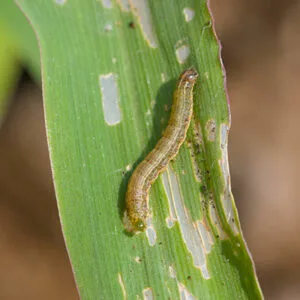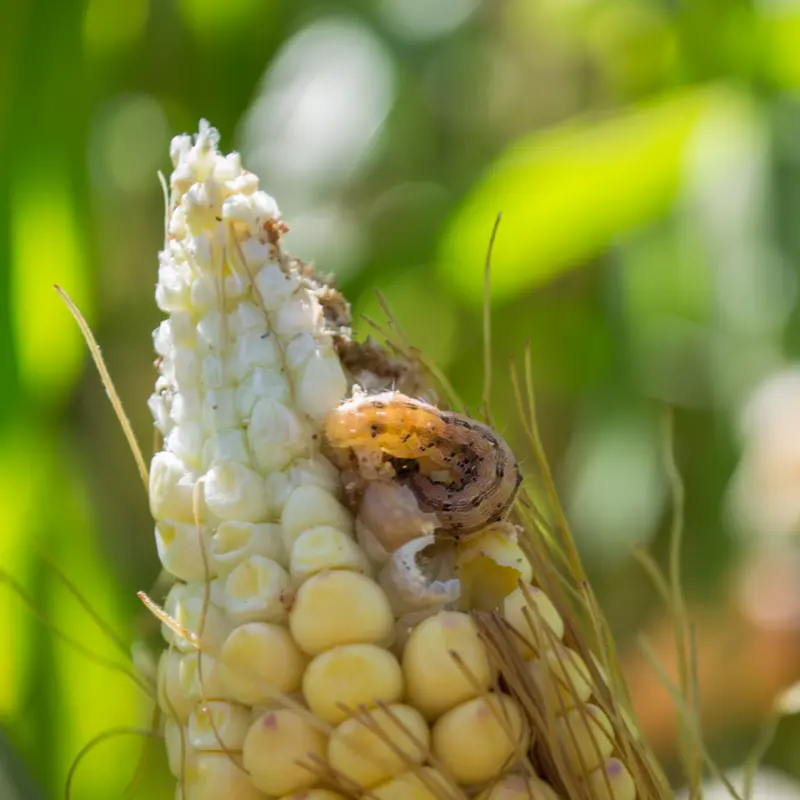What was once only a problem for lawns farther south is now a problem for those of us in North Carolina. Due to the increasing effects of climate change, armyworms have continued to move farther north each passing year. It really can’t be exaggerated just how quickly armyworms will devour a lawn – leaving behind devastation that looks like a plague of locusts has descended. You put a lot of time, effort, and money into your outdoor space. It should be a place where you feel comforted – not distraught. Learn how to recognize the signs of an armyworm infestation and how professional pest control can help matters.
Everything You Need To Know About Armyworms
What Are Armyworms

Armyworms are not only becoming a scourge for Cabarrus County but they have also been found in the Northeast and Midwest for the first time in recent years. As you might have guessed from the name, armyworms are named for the way they go marching across your lawn – devouring it in the process. And unlike other pests, who prefer specific plants to eat, armyworms are not picky. They will happily grab a meal wherever they can – whether that’s a golf course, athletic field, or your lawn. Armyworms are particularly devasting to cornfields – which is their favorite crop.
Unlike many pests, armyworms are indeed native to North America. At this time, their full range of activity is potentially anywhere east of the Rocky Mountains. It’s unknown if they could spread coast to coast, but as the climate continues to warm, they may seek food sources out west.
Appearance
Interestingly, armyworms don’t stay caterpillars their whole lives. The armyworms you see eating your lawn are one stage in the life cycle of the moth Spodoptera frugiperda. The larvae of this moth are the grayish-green caterpillars we call “armyworms.” To distinguish an armyworm larva from other caterpillars, look at the top of their head. If it’s an armyworm, you should see an inverted letter “Y.” You should also see a long white stripe(s) down their abdomen. Typically, armyworms emerge in June and July and experience a second wave in early fall. The adult moths of this species are prolific breeders – laying up to 2,000 eggs at a time and mating multiple times a day. The eggs will hatch in as few as ten days, which means a pregnant female can quickly overrun your lawn in a matter of weeks. To make matters worse, she’ll lay her eggs in multiple locations – not only the lawn but also on walls, fences, sheds, garages, fire pits, patio furniture, and virtually anywhere the eggs can remain undisturbed.
Signs Of Armyworm Activity
Armyworms often get mistaken for another surface lawn pest called sod webworms. While both are the caterpillar-like larvae of moths, they are not the same species. For one thing, sod webworms are nocturnal. They build shelters on the lawn to hide from predators during the day. These shelters are built from a silk-like material, where the “webworm” name comes from. On the other hand, armyworms will feed any time, day and night. Once they reach adulthood, they’ll be full-fledged moths, and they’ll use their wings to fly to new yards.
If you see any of the following happening in your yard, it could be armyworm activity.
- Thin or brown grass and patches of dead grass that appear quickly.
- Grass blades that look as if they’ve been torn or ripped – as if with a dull mower blade.
- Sections of lawn that look as if someone’s been digging. Animals will often tear up your turfgrass to get at armyworms.
- You see the armyworm caterpillars upon close inspection of your grass.
DIY Armyworm Test
If you have one or more of the symptoms listed above, there’s an easy and quick way to tell if you indeed have armyworms present. Take a bucket that holds a minimum of three gallons of water. Adjust the tap, so the water is warm but not too hot. Once full, add a tablespoon of dish soap and stir it in, but be careful not to make the water bubbly. Finally, dump the water into a designated section of the yard and wait. After a short time, if any armyworms are present, they should wriggle to the surface to escape the dish soap. If armyworms do come up, make a note of how many you see in one square foot. If there are more than five, you have a bad infestation on your hands.
How To Restore A Lawn Damaged By Armyworms
Armyworms are so devastating because they work so fast. Other pests like grubs will damage a lawn gradually, but armyworms can devour a lawn literally overnight. Your lawn could be perfectly healthy one day and brown and torn up the next. The first thing you’ll need to do is kill off the armyworms. If you’re wondering: where do I find pest control near me? Look no further. Pine Valley Turf’s insecticide program deals with several common pests, including grubs, fire ants, and of course, armyworms. We offer customized solutions to this problem, and we’ll kill the existing infestation and keep the armyworms from returning.
Once the bugs are killed, you’ll want to assess how much damage was done. Depending on the severity of the infestation, the damage could be a few patches or the entire lawn. Pine Valley Turf offers seeding services to repair damage caused by armyworms and a lawn fertilization program to help your new grass germinate faster.
If you suspect you’ve got armyworms, please don’t hesitate to call! The sooner we assess your property, the less damage you’ll see!
Win The War On Armyworms – Find Pest Control Near Charlotte, NC
Don’t let armyworms march across your lawn and cause major damage! Get armyworm control from the professionals at Pine Valley Turf. Our customized solution will both treat existing infestations and help prevent future ones. To learn more about this beneficial treatment, please call us at (704) 831-8917 or send us a message on our online form here.
Don’t forget to check out our blog page here.
To see photos of our work and learn about the latest deals, be sure to like us on Facebook and Instagram.



